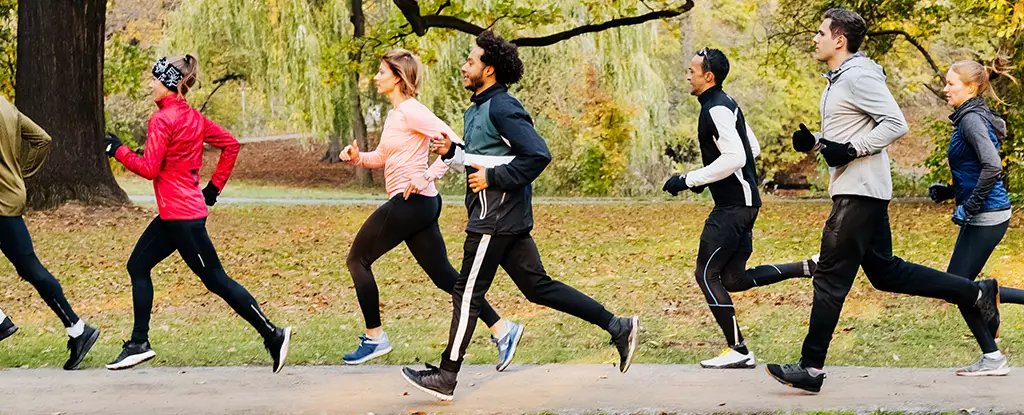Runners are constantly striving to improve their speed and performance. Whether you’re an amateur or a professional, the desire to run faster is a common goal. However, there is a growing trend in the running community that advocates for a different approach – slow running. This movement suggests that anyone can run, regardless of their ability or pace, and it offers a multitude of benefits. In this article, we will explore the advantages of slow running and why you should consider incorporating it into your training routine.
When we think of elite runners like Eliud Kipchoge or Kelvin Kiptum, we often assume they spend most of their training time at record-setting paces. However, the reality is quite different. Research shows that elite runners actually spend approximately 80 percent of their training sessions in what is known as “zone 2 running.” This pace raises their heart rate but is still slow enough to hold a conversation. Only about 20 percent of their training is done at higher intensities closer to race pace.
The reason behind this training approach is to minimize the stress and strain on the body. As running speed increases, the risk of injury and illness also rises. By reducing the time spent at higher intensities, athletes can lower their chances of missing out on training due to health concerns. This balance allows them to maintain consistency and avoid setbacks.
An essential aspect of training is developing a solid base, which serves as the foundation for all other adaptations. For endurance runners, this refers to their baseline cardio-respiratory fitness, on which higher intensity adaptations can be built upon. Think of it as a pyramid, with a strong base supporting the rest of the structure. Slow running, specifically in zone 2, plays a crucial role in developing this base by exposing the body to relatively low physiological stress.
During zone 2 running, although the heart is not under significant stress, the amount of oxygenated blood pumped per heartbeat is close to its maximum capacity. This is vital for running success, as a well-developed base enables more oxygen to be delivered to the working muscles with each heartbeat. Adequate oxygen supply is crucial for optimal performance and endurance.
Another advantage of slow running is its ability to utilize stored fat as an energy source. Unlike higher intensity runs that rely on glycogen stores derived from carbohydrates, slow-paced running encourages the body to burn fat for fuel. This metabolic process is more efficient, as a single molecule of fat provides more energy than a molecule of carbohydrate. Consequently, runners experience less overall fatigue and improved performance on race day.
Multiple studies have demonstrated that athletes who incorporate more slow running into their training routines experience greater gains in VO2 max (oxygen capacity) and race speed. Comparatively, slow runners see approximately five times more gains in their aerobic base than those who predominantly focus on high-intensity runs. This highlights the importance of prioritizing slow running to maximize overall performance.
If you’re interested in giving slow running a try, it’s essential to be mindful of your pace. Physiologically, zone 2 occurs below the lactate threshold, which is the point where lactate begins to appear in the blood. To determine your slow running pace, aim for a speed where holding a conversation is still possible, and your heart rate is around 70 percent of your maximum. If you find yourself struggling to maintain a conversation, it’s an indication that you need to slow down.
In addition to physical advantages, slow running also offers numerous benefits for mental health and overall well-being. The relaxed pace and lower intensity provide an opportunity to enjoy the experience of running without the pressure to constantly push for faster times. If you’ve always felt self-conscious about your slower running pace, this approach may inspire you to lace up your shoes and embrace the joy of running.
Slow running has gained momentum in the running community due to its numerous benefits. Elite runners have incorporated slow running into their training routines to reduce the risk of injury and build a strong base. By utilizing fat as an energy source and promoting greater gains in aerobic base, slow running can lead to improved performance and endurance. Whether you’re an athlete or a recreational runner, embracing a slower pace can enhance your running experience and contribute to both physical and mental well-being. So, why not give slow running a try and discover the rewards it can offer?


Leave a Reply